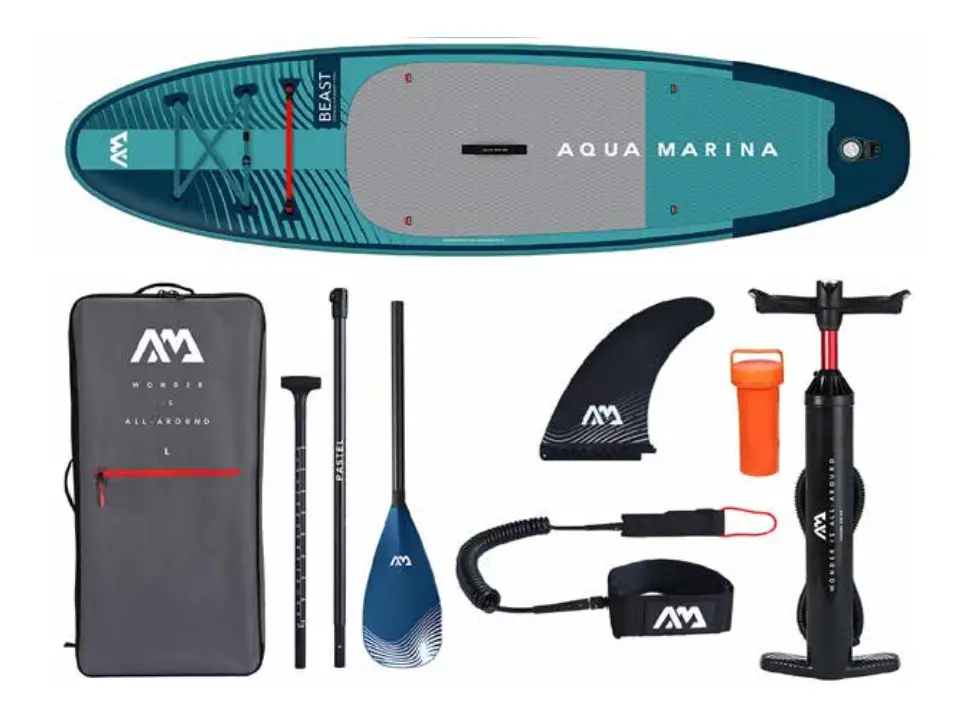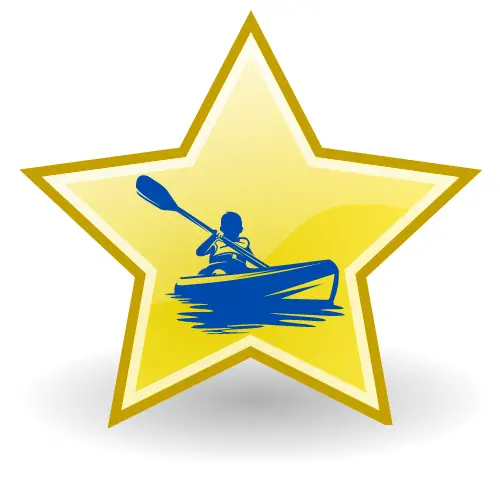SUP rides are exciting, fun, and atmospheric. Most people prefer modern inflatable models, which are not inferior in running and performance characteristics (strength and durability) to rigid versions. They are easier to store and transport. However, not everyone knows how to do it correctly.

When operating, inflating-blowing, transporting, and storing an inflatable SUP board, certain rules should be followed that will help extend the life of the equipment. Before you go out on the water, the board should be inflated. At first glance, there is nothing complicated here. But still, there are cases when the sap loses its shape in the water. A few useful tips will help to minimize the occurrence of such a situation, as well as keep the perfect condition of the SUP board for as long as possible.
Table of Contents
Why the SUP deflates
Only two elements are important in the inflation process: the pump and the valve. A pump with a pressure gauge indicating the pressure level inside the board is usually included. The valve, whose main function is to hold and release air, is located at the tail end of the SUP board. This small opening acts as a damper and has two positions: open and closed. The pump must be connected and pumped with the valve closed (piston up). In this situation, the air will not escape back, and you can inflate the watercraft without worrying that it will deflate.
The open valve (the piston is sunk down) indicates the free movement of air through it. In this position, the sap deflates.
Thus, if you do not control the valve and accidentally or unknowingly leave it open, on the water the SUP board will start to lose its shape and necessary rigidity. Gradually it will simply deflate.
Therefore, it is important to remember the order of actions for inflating the equipment: close the valve, connect the pump, inflate the board, and screw the valve cover. When deflating, you will only need to open the valve. You can open-close the valve by lightly pressing your fingers on it.
How to pump a SUP board
How much pressure should I pump a SUP board too? Each manufacturer specifies the maximum allowable pressure. Usually, it varies from 15 to 20 psi.

You can inflate the board with a manual or electric pump. It is much more efficient to work manually with a two-way pump. Pumping is done by lowering and raising the piston. It is possible to switch to one-way mode.
Step-by-step instructions on “How to pump a SUP board with a hand pump”:
- Take the folded board out of the bag and carefully lay it out on a flat surface (better on grass or other clean surfaces);
- Move the air valve to the closed position (piston up);
- Connect the hose to the pump;
- Screw the free end of the hose into the valve of your SUP board;
- Fix the pump with your feet and start pumping to the recommended pressure;
- When the hand of the pressure gauge reaches the necessary numbers, disconnect the pump from the valve. This action will be accompanied by a loud “hiss”;
- Quietly close the air valve with the cap;
- The SUP board is ready to be launched!

The whole process takes 15–20 minutes. The Double Action pump requires a little more physical strength but reduces the pumping time.
An electric pump or a car compressor can help you inflate your board in 5 minutes without any effort. Simply plug it into your car’s cigarette lighter socket or battery terminals. Such units are not included in the kit and are slightly more expensive than hand pumps, but many times easier to pump. You may need an adapter for the compressor, which can be purchased at the appropriate online store.
How to deflate a SUP board
It is not necessary to deflate an inflatable board. It can be transported in an inflated state. But if it is still more convenient to move and store it until the next ride in the bag, it must be deflated:
- Lay the SUP on a flat surface;
- Allow some time for it to dry. You can put the board vertically, leaning against a tree, for example. This way the water will drain faster;
- Remove the removable fin and put it away in the bag;
- Open the air valve and the board will deflate;
- Start to roll your SUP from the side opposite the valve;
- Pack the rolled-up board in the special backpack or bag included in the kit.
It is much easier to deflate this watercraft than to inflate it. Each time you deflate it, it will be faster and faster.
How to Store an SUP board
The inflatable SUP board can be stored in two ways: inflated or deflated. In the chosen storage location, certain conditions must be met:
- A normal level of humidity to prevent the formation of mold on the material of the SUP board;
- Absence of direct sunlight, which can discolor and damage the surface layer;
- Maintaining an optimum air temperature of -5 °C to +25 °C. Extremely low or high temperatures could lead to the delamination of the material.
When inflated, the board is perfectly stored in any indoor room on the wall or on special stands on the floor. This can be a room, basement, garage, or insulated balcony. The main thing is to maintain a favorable microclimate. During long-term storage, it is recommended to deflate a little (about half of the working pressure). It is not forbidden to leave the SUP outdoors. For extra protection, it is better to cover the equipment with a tarp. But not just throw the material on top, and come up with a kind of tent on the struts, so that it does not touch the board directly, to avoid the accumulation of condensation. It is not allowed to pile on the board any things and objects, especially heavy and sharp, as it can lead to mechanical damage.
A win-win storage option in the off-season is folded into a complete bag or backpack deflated SUP. This way the board takes up little space and is easily placed in a closet or any other convenient place. Before you deflate and roll the SUP board, make sure that it is clean and dry. As you can see, all the tips for operating, inflating, and storing your SUP are simple. With proper care, the inflatable board will serve you faithfully for many years.
FAQ
What is a SUP board?
A sup board, which stands for Stand Up Paddle Board, is a type of board designed for standing on and paddling with a single-blade paddle. It is used in the sport of stand-up paddleboarding (SUP). Sup boards come in a variety of sizes and shapes, and are used in a variety of watersports activities, from recreational paddling to racing and surfing.
How to get on a SUP board?
1. Start with a board that is the right size for you. If you are a beginner, a board that is at least 8 feet long and 30 inches wide is a good size to start with.
2. Make sure that your board is properly inflated. For an inflatable board, you should check the air pressure before every use.
3. Put on a life jacket, and make sure that you know how to swim.
4. Place the board in the water and get on the board. Start by kneeling on the board and then stand up.
5. Grab the handle located at the middle of the board and use it to help you balance.
6. Start paddling with your arms, using the paddle to move the board forward.
7. Practice your balance and enjoy the ride!
What size sup board should i get?
The size of your SUP board will depend on a variety of factors, such as your weight, height, and intended use. Generally speaking, a board that is around 10’6”-11’6” is a great all-around size for most riders. If you are a beginner, you may want to consider a board in the 10’-10’6” range. If you are a larger or more experienced rider, you may want to consider a board in the 11’-11’6” range.
How to deflate SUP board?
1. Open the valves on the board. Depending on the board, it may have multiple valves. 2. Attach the pump to the valve and turn it on.
3. Use the pump to slowly deflate the board.
4. Once the board is completely deflated, remove the pump and close the valves.
5. Roll up the board and store it in a cool, dry place.
What length SUP board?
The length of a SUP board depends on its intended use. For racing, a board should be around 10-12 feet long. For surfing, a board should be around 8-10 feet long. For all-around use, a board should be around 10-12 feet long.
How to patch a SUP board?
1. Begin by selecting the right patch kit for your SUP board. Make sure the kit is compatible with the type of board you have.
2. Clean the area around the damaged area thoroughly with soap and water.
3. Apply the adhesive from the patch kit to the damaged area. Make sure to cover the entire area.
4. Place the patch over the adhesive. Use your hands or a rolling pin to press down firmly and work out any air bubbles.
5. Allow the adhesive to dry and cure for at least 24 hours.
6. Once the patch has dried, you can use a file to smooth out any rough edges.
7. Test the patch to make sure it is secure and waterproof.
What sup board is best for beginners?
It really depends on what your goals are. If you want to start with a board that is easy to ride and gives you a good foundation, then an all-around board is a great choice. These boards are designed to help you learn the basics of surfing and can be used for a variety of waves and conditions. If you’re looking for something more specialized, then there are longboards, shortboard, and fish boards that are great for specific types of waves.
Our best posts:

